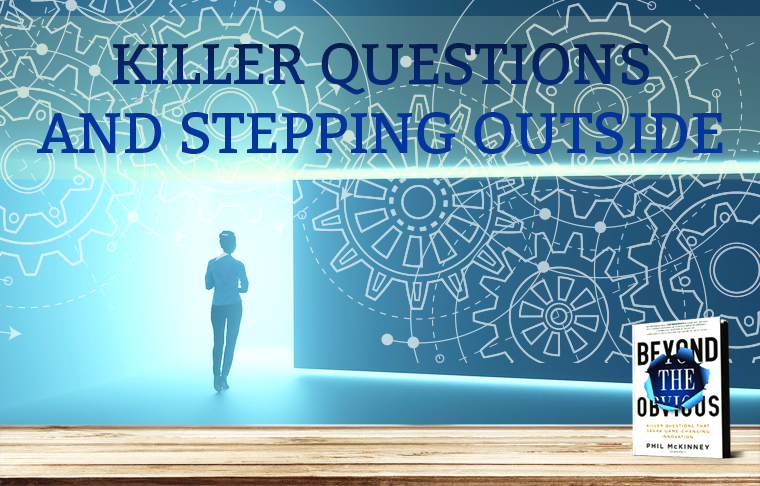Killer Questions and Stepping Outside
Once you have assigned your Killer Questions, briefed your group, and set the date for the innovation session, it’s time for everyone involved to do observational homework. This is exactly what it sounds like. You need your team to get out of the office, into the real world, and make as many observa

Once you have assigned your Killer Questions, briefed your group, and set the date for the innovation session, it’s time for everyone involved to do observational homework. This is exactly what it sounds like.
You need your team to get out of the office, into the real world, and make as many observations as possible related to the Killer Questions. Your team can make these field trips as individuals or pairs, but they should avoid big groups. Big groups allow people to hide and not participate, and a larger-size group can be slower and lethargic compared to smaller groups.
The first thing to decide on is where your observational session will be most useful. For example, if you are focusing on your consumers then you must head to where your consumers generally experience or purchase your product. One there, you should talk to them. For some questions, you might want to talk to salespeople as well as your internal marketing and sales teams—the people making purchasing orders for distributors.
Get Out There and Ask the Killer Questions
So where exactly do you go? You could start in the mall, or your offices or factories—anywhere you or your customers conduct business. Wherever it is, get out there and really engage them. Remember that the dynamic between an organization and its customer is as complex and nuanced as any other relationship. In order to sell to a person you need to understand the details of their life.
Are they in groups or shopping alone? How do they appear? Are they ambling contentedly, or do they appear in a state of distress? Do they make purchasing decisions quickly or spend ten minutes wavering between shampoo brands? What is your gut feeling about the people you are observing? Does their physical appearance match the image you have in your head? What is their emotional state, their financial security? What can you tell about their priorities and beliefs? Is there anything here that surprises you?
Observe Your Customers
When we were developing our tablet device, we went to coffee stores in New York City and recruited members of the laptop-and-latte world, asking them to allow us to conduct in-home observations. This was several years ago, in the pre-Kindle era, and we were still investigating what customers would actually do with a tablet. We knew it could work as a digital book, but limiting it to that use seemed constraining. A digital book was a good idea, but could we press further and come up with an even better idea?
For a few weeks our researchers shadowed the volunteers around their homes. We photographed their book and music collections and noted their magazine subscriptions and TV habits. We figured out what people were really doing with their free time versus what they told us they were doing with their free time. This investigation showed us that what our consumers needed was a device for media consumption across a wide range of media types (books, magazines, music, movies, TV, etc.). This kind of discovery is why you need to get out there in the field and observe your customer. Doing so can completely reshape your understanding of what they actually want from you and your product.
From a Fresh Perspective
If your area of investigation is not focused on consumers—heavy manufacturing, for instance—you will need to tailor your homework to focus on this instead. Go to the plant and see how the factory operates. Talk to the guys on the line. Try ordering your product, try using it. Do whatever it takes to step outside of your experience and see your area of investigation from a fresh perspective.
Have your group note everything they see, learn, and think in relation to the Killer Questions. It could be totally left-field and seemingly unrelated to your bigger problem. Nonetheless, write it down. Take pictures, videos, or audio recordings. Collect evidence and create artifacts that you can share with the team in the workshop. This may feel uncomfortable, and if so, great! The idea here is for everyone involved to step outside of his or her experience and biases and see the customer or product from a neutral perspective.
If you’re not working as part of a group, you can still use other people to force yourself to see things differently. In the past I’ve taken along a friend of a different ethnicity, or strong-armed an out-of-town relative or my wife or children into coming on these kinds of field trips with me. When I do this, I observe them as they observe others. What are they seeing that I’m missing? The goal of all these exercises is to be a little uncomfortable, because this discomfort means you are shifting your perspective, and, quite literally, getting out of the comfort zone that is stagnating you and your work.
Phil McKinney Newsletter
Join the newsletter to receive the latest updates in your inbox.




